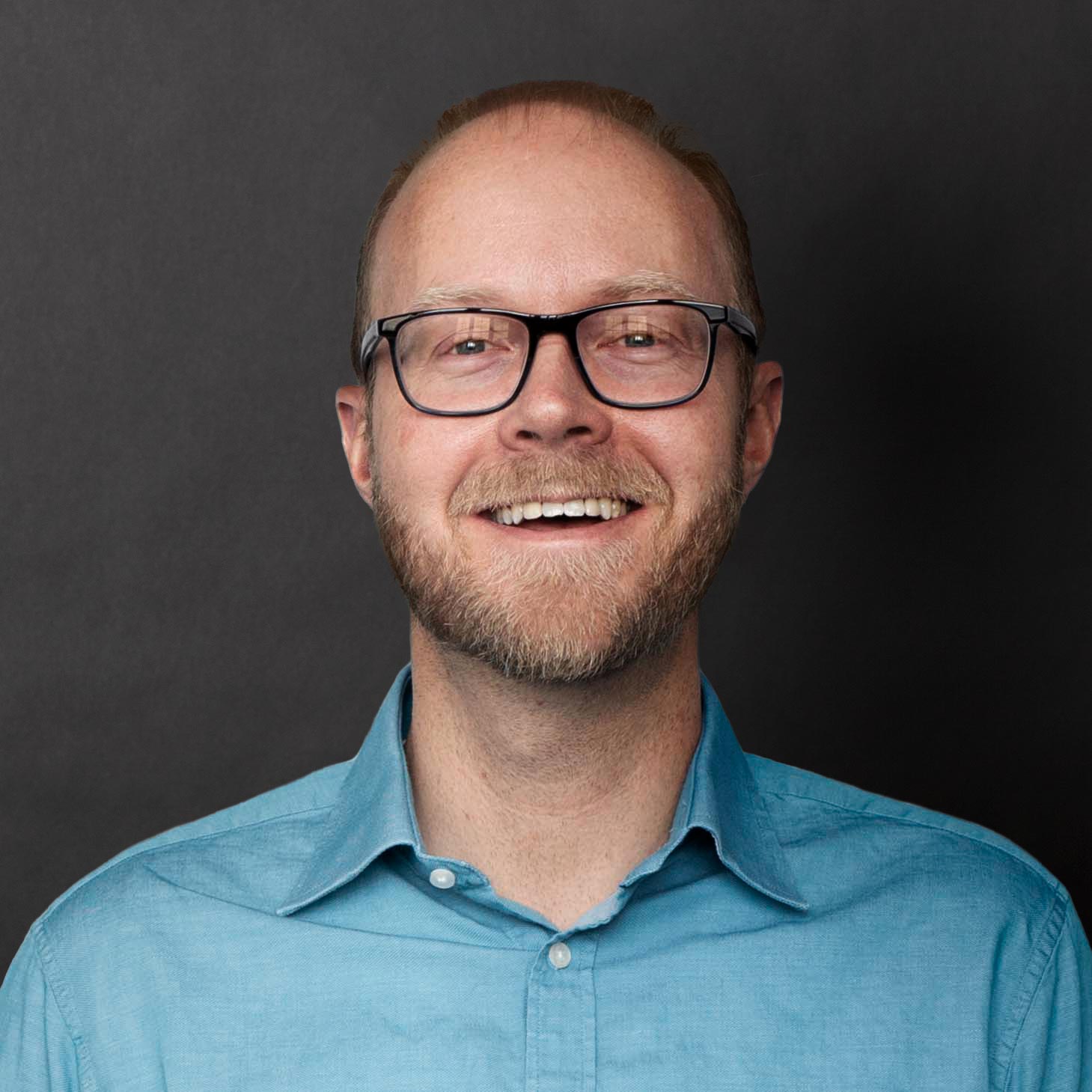

Prior to her current role as CEO, Anne-Marie has served in several positions at VSA over the past 20 years, including Associate Partner of Strategy, Head of Client Engagement, and President. This depth of experience across different disciplines at VSA makes Anne-Marie especially adept at both steering the high-level strategic vision and ensuring its day-to-day implementation. Anne-Marie’s passion for leading relationships from a strategic, consultative perspective builds true partnerships that advance both business and brand, resulting in many enduring client relationships.



Prior to her current role as CEO, Anne-Marie has served in several positions at VSA over the past 20 years, including Associate Partner of Strategy, Head of Client Engagement, and President. This depth of experience across different disciplines at VSA makes Anne-Marie especially adept at both steering the high-level strategic vision and ensuring its day-to-day implementation. Anne-Marie’s passion for leading relationships from a strategic, consultative perspective builds true partnerships that advance both business and brand, resulting in many enduring client relationships.

Prior to her current role as CEO, Anne-Marie has served in several positions at VSA over the past 20 years, including Associate Partner of Strategy, Head of Client Engagement, and President. This depth of experience across different disciplines at VSA makes Anne-Marie especially adept at both steering the high-level strategic vision and ensuring its day-to-day implementation. Anne-Marie’s passion for leading relationships from a strategic, consultative perspective builds true partnerships that advance both business and brand, resulting in many enduring client relationships.

Prior to her current role as CEO, Anne-Marie has served in several positions at VSA over the past 20 years, including Associate Partner of Strategy, Head of Client Engagement, and President. This depth of experience across different disciplines at VSA makes Anne-Marie especially adept at both steering the high-level strategic vision and ensuring its day-to-day implementation. Anne-Marie’s passion for leading relationships from a strategic, consultative perspective builds true partnerships that advance both business and brand, resulting in many enduring client relationships.

Prior to her current role as CEO, Anne-Marie has served in several positions at VSA over the past 20 years, including Associate Partner of Strategy, Head of Client Engagement, and President. This depth of experience across different disciplines at VSA makes Anne-Marie especially adept at both steering the high-level strategic vision and ensuring its day-to-day implementation. Anne-Marie’s passion for leading relationships from a strategic, consultative perspective builds true partnerships that advance both business and brand, resulting in many enduring client relationships.
VSA’s CEO Anne-Marie Rosser was recently interviewed by Top Interactive Agencies (TIA), where she talked trends, human nature versus data, and the thing people are most surprised to learn about her. See the interview below, or view the original piece.
I started out in an account role function but really felt that I was doing the strategy lift. At the time, I asked our CEO if I could start a strategy function and he said “sure.” So, I played in the strategy space for about 15 years at a few agencies, and then ultimately decided I wanted to apply what I had learned in strategy to grow relationships in a more consultative way. I did that for about 10 years before moving into a role as agency president and then CEO.
The food and the people! It’s a beautiful city that has scale—but also has great neighborhoods and can feel small. It’s a very livable city. It also has a great food scene with anything you can imagine. Like any city, it’s really about walking the neighborhoods to get a feel for it.
It’s been a really transformational time in the industry at large, and for our agency. So much so that our attention can get very fragmented. My focus now is on prioritization and execution. It’s easy to get distracted, but execution is still imperative, and that requires the ability to prioritize what is most important and let some of the rest wait.
I’m still learning! As a relatively new CEO, this is one of my challenges. But I think it’s really critical that executives are close to the work to ensure their vision is relevant and achievable. In some ways, vision is the easier part. It’s execution—through the day to day—that determines your success. I have a really great team that challenges me and keeps me honest on both fronts as we try to reserve time that is focused on 50,000-foot issues and time that is reserved for day to day. This helps all of us change gears together.
I want people to experiment and not view it as a failure if an idea doesn’t work out. This doesn’t relate just to client work, but to our own internal structure and processes as well. Right now I think it’s about staying very close to culture and the pace of change, and encouraging teams to meet clients where they are while still having the courage of their convictions. We also have an internal drive to “own” ideas and innovation. We hold each other accountable.
There is more and more data that supposedly tells us EXACTLY what people want and where. I think it’s useful to take some of that data with a grain of salt because it is inherently backwards looking. People are unpredictable, so human-centered design in part means remembering the human tendency to surprise.”
Most recently, we rolled out a campaign for our client FactSet that I think really embodies that goal. FactSet is a global financial digital platform and enterprise solutions provider—it’s heavily in the B2B space. When we were designing the campaign for them, we thought about how so much of B2B advertising is frankly very boring and decided to do something different. The campaign has three different spots, and they’re all really funny! [You can check them out here.] We think that a smart departure like this from the category norms makes B2B brands stand out in a good way and keeps people thinking about that brand experience long after.
Honestly, I think it comes back to basics versus always focusing on just “what’s new” in digital. For an ecosystem to work, it has to have movement, and that means 1) know your audience and what they are about, and then 2) reduce friction as they move freely within the ecosystem. If you miss these fundamentals, the rest doesn’t work. I think the other secret is in your question itself: “prioritize.” As I mentioned a few answers ago, prioritization isn’t easy—it takes real discipline. Brands that can prioritize, which inherently means giving other things up, stand a much better change of thriving.
Relevancy is achieved by deeply understanding your audience and acknowledging that even once you know them deeply, you’re never done. You have to keep returning to that well to understand what has changed, because what’s relevant to them changes. Trends can be significant or fleeting, but certainly understanding cultural currency is important. It becomes truly meaningful only when you can connect it back to your specific audience and what they care about. So, I guess I’m less concerned about the trends that may stay or go, and more about how audiences are shifting their attention and why.
What a great question. Our purpose is to “design for a better human experience,” which is a lofty goal for an agency. But it’s because we fundamentally believe that behind every business or marketing problem is a human problem to solve. There is more and more data that supposedly tells us EXACTLY what people want and where. I think it’s useful to take some of that data with a grain of salt because it is inherently backwards looking. People are unpredictable, so human-centered design in part means remembering the human tendency to surprise and remembering to have empathy for a real human problem that needs to be solved. Sometimes trusting your gut and pushing to disrupt the data is the best way to think about where human-centered design will go because it looks forward rather than back.
I would have to say TikTok is the platform or emergent player that I still say “wow” to in terms of how disrupting it is. It is fundamentally changing our relationship with all content—news, information, brands, entertainment. Building off of what social platforms started, TikTok is changing information and commerce more profoundly. The biggest takeaway for me is the serious shift in our attention span and how information is consumed. The ongoing shift from a “broadcast to your audience” model to “show up where the conversation is already happening” has big implications for everyone, and I don’t know that we’ve fully cracked the code on what it will mean.
It’s alive and well. I am seeing small startups of every stripe, including agencies, pop up everywhere and do great work. Chicago remains a place where people are more focused on the ideas and the work than the marquee, so I think that’s a real strength.
VSA brings brand strategy and activation to the table for MTP. Our deep design heritage and consultative style allows us to go deep with clients to drive results. MTP’s belief that agencies can still be independent while benefiting from shared values and collaboration is part of VSA’s ethos and how we work.
This is such a great question. As a parent with three kids nearing college age, it’s one I’m asking! I absolutely think that creatives can break into this industry through routes other than traditional education. The most important attributes are having ideas, communication skills, and the ability to collaborate.
Designers, creators, writers—they all play a huge role. We know that representation matters, so whether that is via illustration, casting, voice talent or accessibility in technology, they all drive our ability to reflect the world we live in with a more accurate and inclusive approach. It’s exciting. We don’t always get it right, but it’s something we continue to challenge our creative teams to think through.
My mom is an artist, and I think spending summers with her growing up in New York was very formative. Learning to see and appreciate aesthetics in all different areas of life is a huge part of my work life, but also my life outside of work. While I’m not a creative and came up through strategy, I am fascinated by the work that creative can do. I speak the language.
I’ve been a bookworm for life, and then just being outside, gardening, travel. All the good things!
There are so many! But I would say that issues around women’s rights are closest to me. This is because of my own experience, but also having three kids at a time when access to women’s rights are being reduced. I’m also very cognizant of what has been changing in the workplace for women and how I can model the type of behavior and leadership that I feel women should be able to claim for themselves. There is still a lot of “micro-misogyny” out there: exclusionary behaviors, mansplaining, lack of confidence in a different leadership style that favors listening as much as pontificating.
People tend to be surprised by my sleeve tattoos. That’s not the vibe I give off when people first meet me (apparently).

